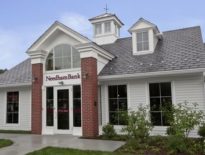
Despite signals that the Federal Reserve will likely cut interest rates this year, banks will still find it tough to keep high deposit rates from eating into their profit margins, observers say. iStock illustration
According to a recent J.D. Power survey, customer satisfaction with U.S. banks may have improved, but depositors’ money is being drawn away by higher-yield offers. Bank experts say that this phenomenon is also happening to local banks, pushing them to find ways to be more competitive in getting deposits while trying to lower deposit costs.
Around $1 trillion to $2 trillion worth of savings that people had during the pandemic has been flowing out of the banking industry since 2022 as people are either putting it in higher-yielding accounts and the stock market or spending it for their personal expenses as prices of goods and services remain elevated.
And even though top Federal Reserve officials set their sights on three 25 basis-point cuts to the central bank’s benchmark interest rate this year, local banks are still likely to offer rate specials for its certificate of deposit (CD) offerings to keep attracting depositors but will keep it in shorter terms such as six to 12 months, Jeff Reynolds, managing director at Newburyport bank and credit union strategy firm Darling Consulting Group (DCG), said.
“A lot of banks are doing the best that they can, and when the Fed cuts interest rates, [they will] keep CD [certificates of deposit] maturities in a 12-month structure more so than 18 to 24 months. That is going to continue, and aggressively priced CDs may even have shorter lifespans of around six months,” Reynolds said.
Shorter-Term CD Rate Specials
The most attractive CD rate specials in Massachusetts currently have an annual percentage yield (APY) that ranges from 5.18 percent to 5.50 percent and are available in shorter-term options such as three-, six-, and nine-month CDs.
Reynolds said that with the Fed cutting interest rates this year, bankers will likely be able to lower the interest rates of larger deposit accounts, such as corporate banking accounts, faster compared to “stickier” traditional retail deposit accounts.
“On average, if the Fed cuts rates, certainly, the larger-balance accounts that are contractually indexed will move aggressively with the Fed funds. We can expect that most bankers would lower the rates of those accounts. Compared to more traditional retail accounts, things are stickier. Most banks maintain around 3.25 percent to 4 percent rate on money market accounts and they might not have that much capacity to lower rates aggressively,” he said.
He noted that deposit costs are increasing at present and that there will be a lag in the reflection of deposit pricing even when the Fed reduces rates in the first quarter. Some banks have also locked in time deposits such as CDs last year that have 12 months term or more, which would take some time to mature and for the bank to “price it down,” he said.
“A lot of it is environment-based. It will take some time for banks to have the fortitude to [lower rates] as banks need liquidity through deposits. You’re not going to start to see this until the Fed cuts a total of 100 basis points or more [in interest rates],” Reynolds said.
Minutes of the Federal Reserve’s interest rate-setting committee’s last meeting, released Wednesday, show policymakers still don’t have a clear timeline for enacting the rate cuts they predicted going into that conference.
The Fed raised interest rates 11 times from 2022 to 2023 in an attempt to bring down inflation to its 2 percent target.
For commercial banks, Brookline Bank President and CEO Darryl Fess said, deposit gathering is also challenging, but his bank plans to stick to its strategy of focusing on getting new commercial accounts, building one relationship at a time and meeting all of its clients’ banking and lending needs.
“We often try to offer a fair and competitive rate, but we’re not the bank that is out there looking to have the highest rates. We need to maintain an interest margin in banking and we try to have things that are maybe a little different to attract the client to us,” he said.
Brookline Bank offers a CD APY rate special of 4.75 percent for six-month CDs and 5 percent for both nine-month and 13-month CDs. Fess said the bank is monitoring the deposit rate “floor” once the Fed cuts rates and is considering lowering rates according to the pricing in the industry.
Banks Must Balance Loans, Deposits
As deposits continue to flow around the financial system, bankers are being forced to think of ways to keep money flowing and business running in 2024.
Reynolds said that even though many lenders might be tempted to start dropping deposit interest rates as the Fed cuts its benchmark rate, in order to lower pressure on strained profit margins, they’ll have to watch their backs.

Nika Cataldo
“A given bank’s appetite to risk deposit outflows in favor of cost savings will likely be heavily influenced by loan demand and liquidity needs. If a handful of banks in a given region are attracting loans at rates they are happy with, they will be more inclined to keep deposit rates higher to attract more liquidity. This could put pressure on other banks to keep their deposit rates higher and longer than they would like,” Reynolds said.
According to the latest Freddie Mac data, the average interest rate on a 30-year fixed mortgage has steadily dropped, ending last week at 6.62 percent, compared to its 20-year high of 7.79 percent, reached in the week ending Oct. 26 last year.
Reynolds said that many banks are also undergoing a mindset shift and accepting that this year will see dampened home lending originations: Homeowners with 3 percent and 4 percent loans secured during the pandemic will not inclined to refinance unless interest rates come down to a 4 percent level.
“There are not [going to be] a lot of refinancing waves this year. Most banks are prepared for lower loan growth this year,” he said. “2024 is a bridge year to the next business cycle.”
Continued FHLB Borrowings
Cornelius Hurley, a banking law professor at Boston University, said that while it is tapered already, depositors still have lingering cautiousness of placing their money in banks due to the bank failures in the spring.
“In a lot of ways, we are still adjusting from the banking crisis, when that happened in March and April [of 2023]. There was a huge migration of trillions of dollars of deposits, which either left the banking system and went to money market mutual funds or moved out of regional and community banks [and went into] the ‘too-big-to-fail’ banks,” Hurley said.
Since the bank failures of spring 2023, the $1.3 trillion Federal Home Loan Bank system has served as a place where banks can borrow funds in place of lost deposits. Despite not being the FHLB system’s original intended purpose, Hurley said banks will continue to rely on FHLBs this year for some of their funding needs.
“When all of this money was sucked out of the banking system because of fear, the Federal Home Loan Banks were there, and still are there, providing backup liquidity, to these institutions,” Hurley said. “One of the reasons is that the Home Loan Banks don’t ask as many questions as the Fed does. There’s a stigma attached to the idea of borrowing from the Fed that if you borrow from them, you must somehow be in trouble.”





